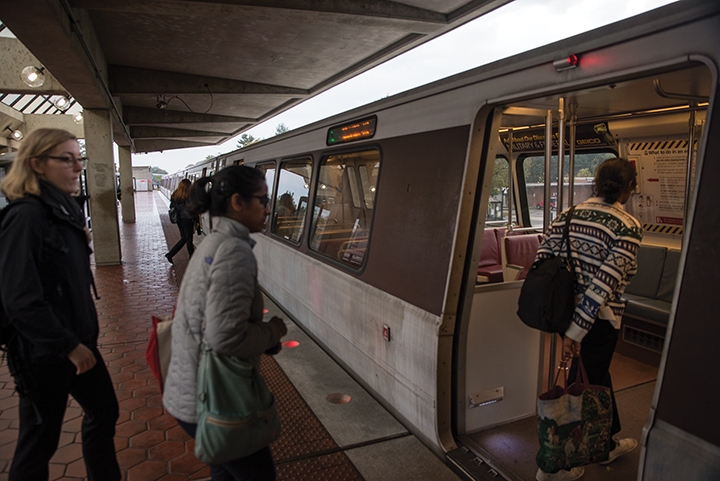Views expressed in opinion columns are the author’s own.
The Trump administration plans to cut $150 million in Metrorail funding from its upcoming budget. While this is bad news for almost anyone living in the D.C. metro area, it’s in line with the administration’s apparent lack of interest in improving public transportation in America. In a budget proposal last year, the White House cut spending for the U.S. Transportation Department, as well as for public transit construction projects that had already been promised grants.
This attitude of not giving a shit about public transportation and those who depend on it signals a systematic disenfranchisement of lower income individuals. Maybe Trump is doing it maliciously, or maybe he’s actually as ignorant as he seems, but these budget cuts are ultimately targeting people of lower socioeconomic status who rely on public transport to go to work or school.
[Read more: UMD SGA discusses possible program reducing student Metro fares]
Here at the University of Maryland, about 60 percent of students live off the campus. Given the campus’ proximity to a Metro station, it would make sense for many students to commute using the Metro system. Additionally, the Metro opens up many possibilities for internships and jobs that would otherwise not be accessible for students at this university. More importantly, commuting from home saves many students the high cost of campus living, making higher education possible for many low-income individuals and families.
The Metro is also in dire need of increased funding because it has been on a downhill slope for a very long time. Over the past few years, Metro riders have faced delays, closures and a variety of emergency situations. And Metro’s safety systems are simply not up to par. There have been a variety of incidents involving faulty electrical cabling and smoke being released into tunnels, as well as communication system failures while trains are in the tunnels. In March 2016, an electrical fire caused a systemwide shutdown that lasted about 30 hours, leaving Metro riders to find their own way to their destinations.
[Read more: Metro is too expensive for UMD students to enjoy D.C.’s benefits]
Metro does have to use existing funds responsibly, but the bottom line is that it doesn’t have nearly enough financial support to make all the improvements it needs . It is a disgrace that so many students and other working individuals must rely on such an unreliable method of public transport.
How can we expect anyone with a low income to achieve economic mobility when the government is making it even harder to make a living or get a degree? We all know education is the key to socioeconomic mobility, and underfunded public transportation is yet another obstacle low-income students have to overcome.
Cutting funding for public transportation may seem like a low-profile administration priority, especially amid the chaos of childish tweets and discriminatory policies. But we have to look at the big picture. Every action this administration takes affects someone, often someone who is already disenfranchised, and budget cuts to Metro and other public transport is no exception.
Liyanga de Silva is a sophomore English major. She can be reached at liyanga.a.ds@gmail.com.



